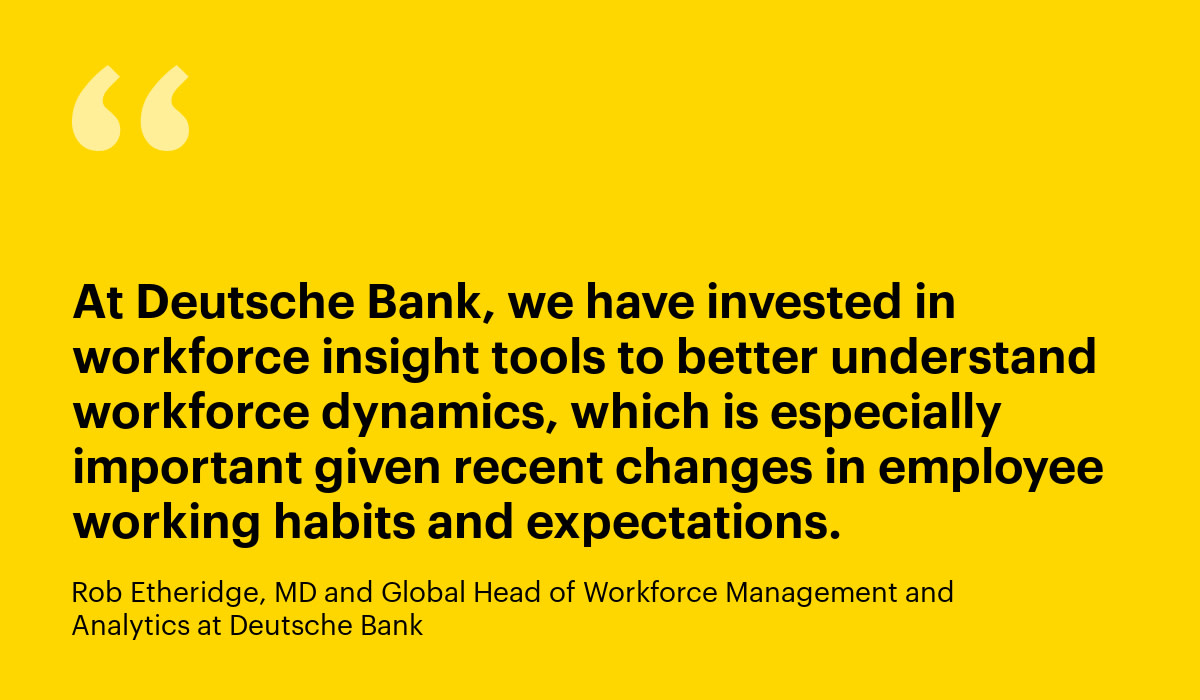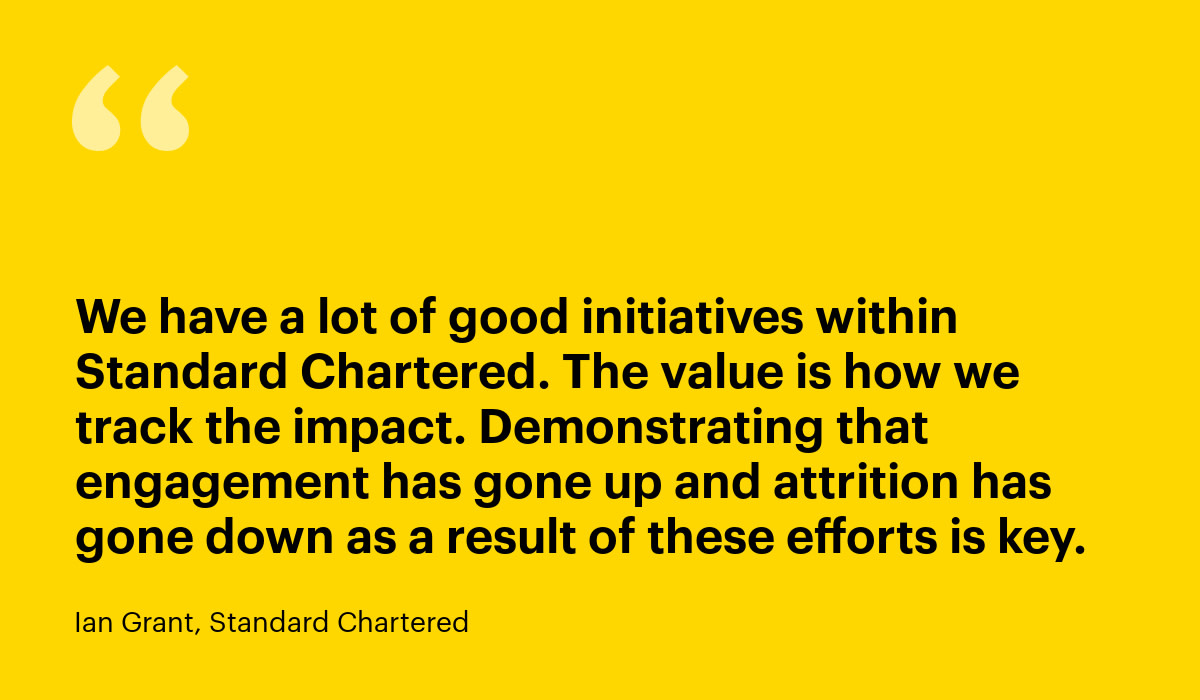Three Magnetic Moves To Attract and Retain Financial Services and Insurance Sector Talent
Finance jobs used to attract the best employees, but the FSI industry doesn’t have the pull it once did. Here’s 3 ways to get talent back.

“Banking used to be this golden ticket…It’s still a good job, but if you can get Google, Apple, Netflix, Snap—those are better jobs.” – Anonymous (The Money Game, 2021).
Financial services and insurance (FSI) companies have historically been destination careers for the best and the brightest. Today though, these businesses frequently find themselves eclipsed by the excitement or potential hypergrowth of tech, or the purpose-driven business models of pharmaceutical companies.
Finance jobs aren’t as attractive anymore
Banks agree they have a problem. A recent survey of 150 city firms by PwC and the CBI found that the most common workforce priority for the year ahead is retaining talent (56%), followed by maintaining or achieving high levels of employee engagement (44%), and planning for future talent requirements (36%).
FSI businesses that want to remain among the first choices of bright graduates and talent of all ages need to change the way they do things. Making smart use of people analytics to better understand employees is key to gaining a competitive advantage in attracting and retaining the people they need for the corporate challenges ahead.
“Used in the right way, and beyond the orbit of HR, data analytics can be a powerful and fast driver of behaviours. Crucially though, it must be marketed on an ongoing basis.” — Ampie Swanepoel, Head of Workforce Insights Value Management at Standard Bank

To help you get started, here are three tips we explore in our latest white paper: People Powered: Become a Talent Magnet in Financial Services.
Gain clarity on skills and training
Internal skills agility is middling to poor in most businesses, especially large ones. Casual office chat and hearsay—perhaps with a light scraping of CV search terms— won’t cut it in the modern skills market. An accurate picture of internal skills agility requires serious business intelligence.
Motivating employees and other workers to self-report their skills sounds like a good idea, but our experience shows that self-reporting is only truly effective if it’s treated like a mini change programme itself. Put simply, employees won’t feel motivated do it unless they can see what’s in it for them.
The fact remains, though, that it is less costly and quicker to build the workforce you need for tomorrow as much as possible from the workforce you have today. Internal mobility is key to building a diverse workforce that will be able to withstand the inevitable raids from fintechs and defections to other industries.
“At Deutsche Bank, we have invested in workforce insight tools to better understand workforce dynamics, which is especially important given recent changes in employee working habits and expectations.” — Rob Etheridge, MD and Global Head of Workforce Management and Analytics at Deutsche Bank

Creating a rewarding career path in FSI
Creating a rewarding career path in FSI has never been more important. Our research suggests more than half of UK financial services workers plan to change jobs this year. In this context, how can people analytics help ensure your bonus system is fair and reflective of people’s contributions to the business, thus giving them a reason to stay?
In the new world, where hybrid working may become a permanent feature, it is important to know which of your managers are succeeding in the new environment, and which are struggling. Measurement and monitoring of performance is important, but smart companies will ensure productivity with meaningful metrics and use technology for engagement, not surveillance.
The culture of reward and benefits also needs a fresh approach in many institutions. More than any other industry, FSI professes to have visible performance metrics and tracking to reward employees. Yet, again, more than many other industries, reward is tied to a range of social factors and personal attributes. This is part of the culture in many financial institutions, especially when it comes to bonus and promotion rounds. The question is: how attractive is this to prospective candidates in the world we live in today?
“Successful operators focus on the prize—visibility and self-publicity—while offloading the grunt work. Perception is reality.” James Max, The Financial Times
To understand the impact of your reward system at all levels needs a meaningful analysis of pay and other workforce data. A solution is to unify compensation data—salary, bonuses, benefits, and compensation ratios in a people analytics solution, alongside workforce data such as internal movement, performance, and engagement. With such insights you can identify where high performers are at risk of exit, the correlation between pay and performance, pay and productivity, and even overlay business metrics to tie pay policies to business outcomes.
Connect finance jobs with people, purpose, and accountability
The need for diversity and more regular reporting on employee data increased pressure on FSI companies to disclose how they do business and treat their people. This also affects policy makers, regulators, and other industry stakeholders. If we look at what’s happening in the U.S., we can see the Securities and Exchange Commission (SEC) has—as a result of pressure from investment groups like BlackRock and CalSTRS—modernised disclosure requirements on business risk and opportunities in August 2020.
At Visier, we’ve been tracking the effect of this. Non-financial metrics, such as environmental, social, and governance (ESG) metrics, rise to the top of regulator and investor lists. Regulators and investors also spotlight setting and meeting diversity, equality, inclusion and belonging (DEIB) goals, as well as achieving a healthy culture across the board. These concerns squarely on the people analytics team.
DEIB and transparency
A lack of transparency, or worse, not being able to unearth poor decision making around DEIB or pockets of resistance in your organisation, can affect the bottom line. This is particularly true if investors or other stakeholders feel duped by false promises.
Consider reporting DEIB progress at the function level. Teams can benchmark progress and hotspots of inaction if one department or division is doing much better or worse on progress towards targets than others.
Using people analytics within your HR function creates a structure which ensures your business stays ahead of the curve on meeting people goals while rigorously reporting and tracking progress.
Ian Grant, Director, Head of People Analytics & Insights at Standard Chartered, a bank with global operations, already knows the value and long-term impact of this approach.
“We have a lot of good initiatives within Standard Chartered. The value is how we track the impact. Demonstrating that engagement has gone up and attrition has gone down as a result of these efforts is key.” Ian Grant, Standard Chartered

Explore these tips in more detail, and discover more ways to keep the people you need to deliver on business strategy in People Powered: Become a Talent Magnet in Financial Services.
On the Outsmart blog, we write about workforce-related topics like what makes a good manager, how to reduce employee turnover, and employee burnout. We also report on trending topics like the Great Resignation and preparing for a recession, and advise on HR best practices like how to present headcount data to your CEO, metrics every CHRO should track, and connecting people data to business data. But if you really want to know the bread and butter of Visier, read our post about the benefits of people analytics.


